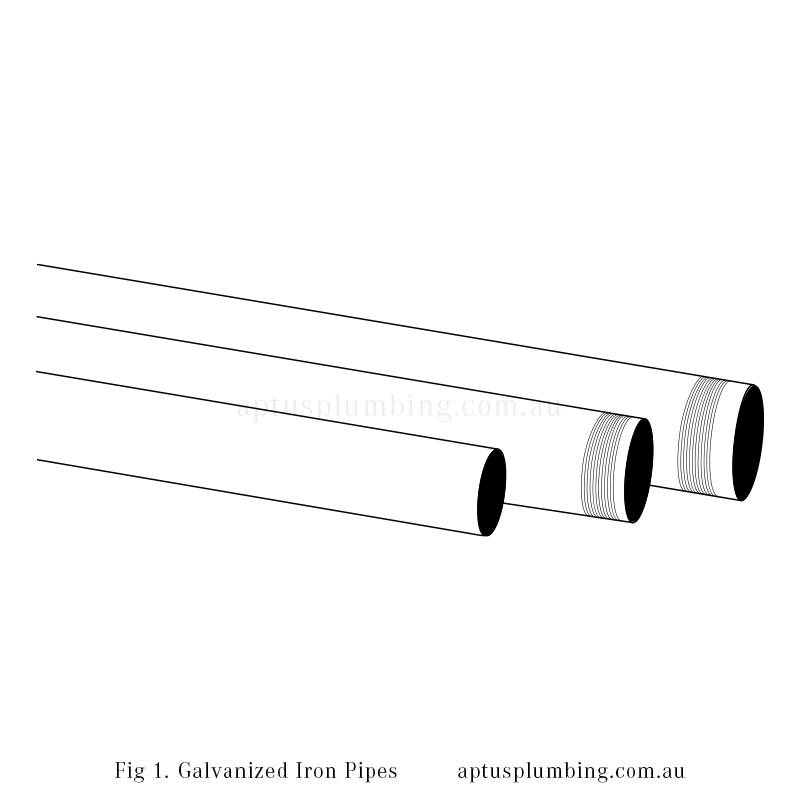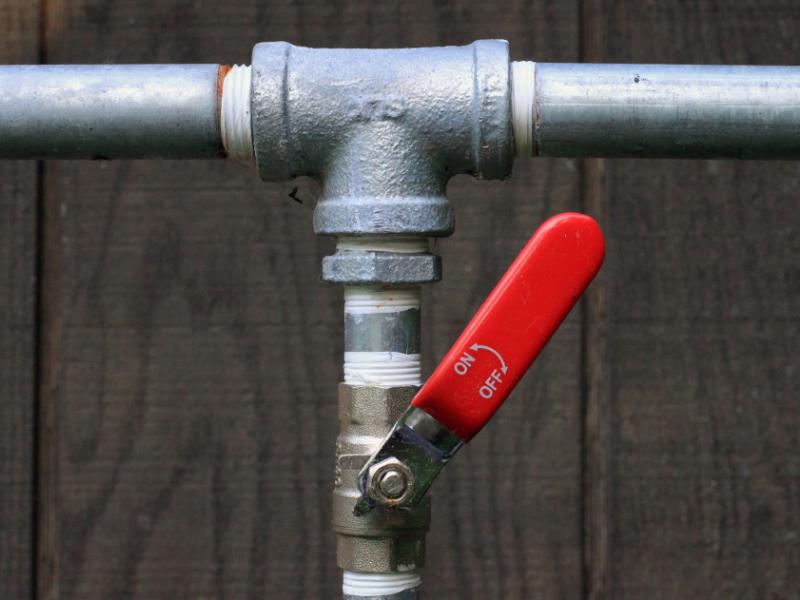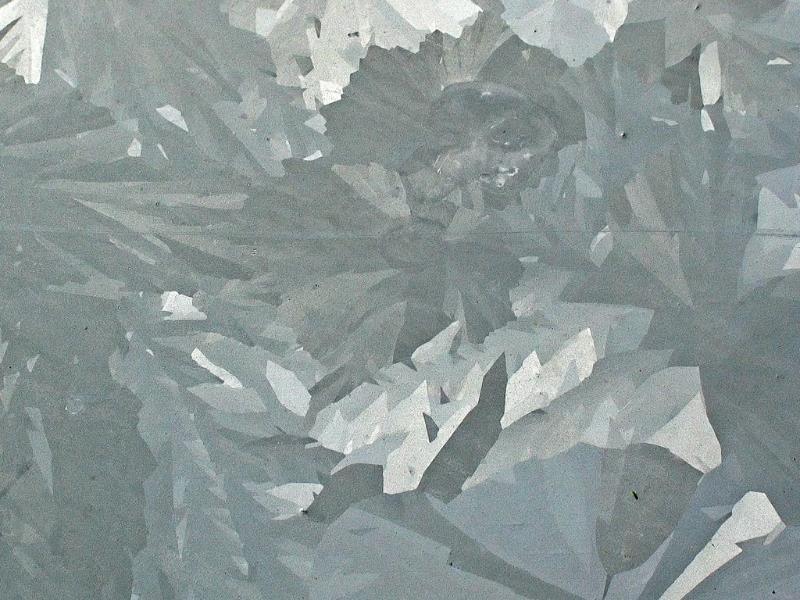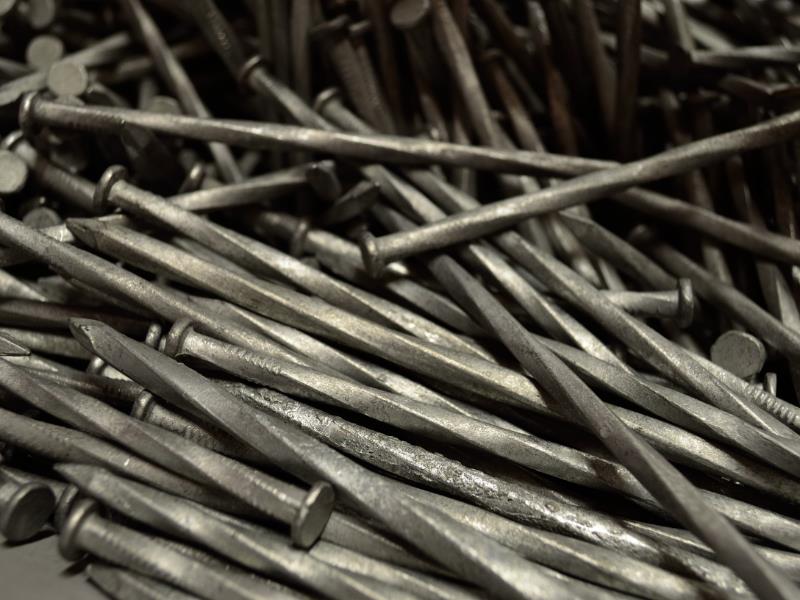Galvanized Pipes
Home / Wiki / Galvanized PipesLast updated Thu 24 Mar 2022
Since plumbing pipes need to be able to survive regular, if not constant, exposure to water and other natural elements, they need to be able to effectively resist rust and corrosion. While materials such as PVC or copper are both naturally quite adept at preventing rust and corrosion, plumbers have also managed to successfully create pipes out of galvanized iron and steel, offering an alternative option.
Galvanization
The act of galvanizing a sheet of steel or iron requires that a coat of zinc be attached to the sheet via various methods. Once bonded to the sheet of metal, the zinc takes the role of a sacrificial anode, and it will be the first material to be bonded to any element that would otherwise have corroded the metal beneath it. Even once holes begin to form in the zinc layer, the sheet may still enjoy localised protection so long as there is enough zinc nearby to continue to provide sacrifice. Once the hole has become large enough, however, then corrosion and rust will begin to form on the sheet.
One of the primary methods of galvanizing sheet metal is to perform hot-dip galvanization. The process involves immersing a sheet of metal into a bath of molten zinc at a temperature of 450°C. Upon removing the sheet from the molten zinc bath, the zinc reacts with oxygen in the atmosphere to create zinc oxide, which then reacts again with carbon dioxide to become zinc carbonate, which is the dull grey colour associated with galvanized metals. Additionally, the process also leaves behind a characteristic crystalline pattern, known as a 'spangle'.
Alternatively, you could also perform electrogalvanization, though this commonly produces a thinner coating of zinc and is typically only preferred for use in automobiles. To electroplate a sheet of metal, you must immerse it in a saline/zinc solution, alongside a zinc anode. You can then run a current through the solution, and the zinc will begin to react with the steel, as it does during hot-dip galvanization.

Aptus Plumbing galvanised pipes
The Use Of Galvanized Pipes In Plumbing
In plumbing, galvanized pipes were once the go-to replacement for the cast iron and lead pipes that had been in use before them. The galvanized pipes are typically more durable than the pipes they were replacing, and they were also quite cheap considering how durable they were.
The Disadvantages Of Galvanized Pipes
Unfortunately, however, their dominance in the plumbing industry would be short-lived, as they were soon largely replaced by copper pipes due to the various disadvantages of galvanized pipes. Where copper was almost entirely corrosion-resistant, galvanizing piping didn't stop rust from developing, instead merely delaying it. As a result, galvanized pipes could, over time, find that rust forming on the inside of the pipe (where it was more common to form as compared to the outside of the pipe) would constrict the flow of water, reducing the effectiveness of the pipe. That rust could also flake off and enter the water supply, adding distinct metallic qualities to the water such as taste and colour. Further, when galvanised pipes are employed for the transport of natural gas, the gas can react to the zinc in the piping, resulting in the zinc peeling off of the pipe in flakes and again clogging the pipe.

An example of a galvanized pipe.
The Advantages Of Galvanized Pipes
That's not to say that galvanized pipes aren't without their advantages, even in the modern-day. The cost of galvanized pipes is still lower than that of copper pipes, which means anywhere that the taste, colour, or general quality of the water isn't entirely imperative, galvanized pipes may be effectively deployed as a cost-saving measure. As a result, they still see common use in places such as the irrigation system of farms, or in plumbing for sewerage and waste. Compared to copper and PVC, however, there are few advantages to galvanized piping in the home, and, when it comes time to sell, it could even be in your interest to hire a plumber to replace any galvanized pipes that you may find in your home with an alternative.
Lead Content In Galvanized Pipe
While the steel or iron used for the galvanized pipe does not contain lead, sometimes, the zinc carbonate can (as zinc is commonly mined alongside lead, the metal can, occasionally, be contaminated). While lead is banned from use in plumbing systems in most Western countries, some existent lead piping is still in use, as is the case with galvanized pipes that may contain lead. However, in the modern-day, there are strict standards surrounding the use of lead in the galvanization process, and all new galvanized pipes are entirely lead-free. Even in galvanized pipes that do contain lead, not only is it unlikely that the water will ever be exposed to that lead, it is even more unlikely that it will be exposed to enough lead so as to transmit any meaningful level of lead poisoning.

The identifiable spackle pattern of a sheet of galvanized metal.

A set of galvanized nails.
Heidy Barbera
05 Dec 2025
Verified
I’m just a tenant at a rental property however I had Mitch come for 2 days to undertake some repair works! He was the most helpful, reliable and respectful person I have ever come to my house to do ... more
Rocky Scott
05 Dec 2025
Verified
THE GUY WAS VERY POLITE ,EFFECIENT, FAST AND STRAIGHT FORWARD , TOLD ME WHAT I NEEDED TO KNOW AND HE WAS GOING TO GET THE REALESTATE AUTHORITY BEFORE DOING ANY PROGRESS OR NOT ,HIS WORK ETHICS, MANNER... more
James Ogilvy
05 Dec 2025
Verified
We had the please of Mitch coming through to sort out a bunch of issues. His work is impeccable, and a genuinely great guy. Can not recommend highly enough!

We happily service all areas of Brisbane and beyond. Get in touch today.
And enjoy peace of mind with a dedicated team on call 24/7
